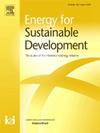Navigating India's Emission Trading System: An analysis of policy evolution, implementation imperatives, and critical review for energy sustainability pathway
IF 4.9
2区 工程技术
Q2 ENERGY & FUELS
引用次数: 0
Abstract
India confronts the dual imperative of addressing climate change vulnerability while pursuing economic development to alleviate millions from poverty. India's Nationally Determined Contributions (NDCs) signal a commitment to this balance, and market-based instruments like the Perform, Achieve, and Trade (PAT) scheme and Renewable Energy Certificate (REC) mechanism previously supporting these NDC targets. The impending Indian Carbon Market (ICM), an emission-intensity-based Emission Trading System (ETS), marks a paradigm shift by directly targeting emission intensity reductions—an area less explicitly addressed by prior energy-climate policies—and consolidating existing mechanisms. Catalysed further by international developments such as the EU-Carbon Border Adjustment Mechanism (EU-CBAM) and evolving global carbon market dynamics, India's move towards a robust domestic compliance and offset framework is timely. This extensive critical review utilises a mixed-methods approach, including narrative and systematic review, through examining policy documents, academic literature, and official data to thoroughly explore the ICM's policy evolution, structural design, operational procedures, governance, and strategic pathways for the future. By synthesising lessons from India's experience with antecedent market instruments (Clean Development Mechanism, PAT, REC) and relevant international ETS benchmarks, this study identifies significant implementation imperatives crucial to the ICM's success. The analysis reveals that the ICM risks inheriting the systemic failures of its precursors—principally structural credit surpluses and weak enforcement—which necessitates a robust design to ensure it can function as an effective policy instrument for sustainable development. The analysis formulates concrete policy recommendations emphasising robust, frequently revised emission targets to stimulate investment in clean energy technologies, a transparent transition towards fully market-based ETS operations, and strengthened governance structures for credible Measurement, Reporting, and Verification (MRV) processes. The findings provide practical recommendations for policymakers, researchers, and practitioners involved in the creation and execution of energy policies and carbon market structures within developing nations, chart pathways to meet the seventh Sustainable Development Goal (SDG 7) of affordable and clean energy by 2030.
导航印度排放交易体系:能源可持续性路径的政策演变分析、实施必要性和关键审查
印度面临着解决气候变化脆弱性的双重任务,同时追求经济发展,使数百万人摆脱贫困。印度的国家自主贡献(NDCs)表明了对这一平衡的承诺,以及基于市场的工具,如执行、实现和贸易(PAT)计划和可再生能源证书(REC)机制,此前支持这些国家自主贡献目标。即将启动的印度碳市场(ICM)是一个以排放强度为基础的排放交易系统(ETS),它标志着一种范式的转变,它直接针对排放强度的降低——此前能源气候政策没有明确涉及的领域——并巩固了现有机制。在欧盟碳边界调整机制(EU-CBAM)等国际发展和不断变化的全球碳市场动态的进一步推动下,印度朝着强有力的国内合规和抵消框架迈进是及时的。这一广泛的批判性评估采用混合方法,包括叙述和系统评估,通过审查政策文件、学术文献和官方数据,彻底探索ICM的政策演变、结构设计、操作程序、治理和未来的战略路径。通过综合印度在以往市场工具(清洁发展机制、PAT、REC)和相关国际ETS基准方面的经验教训,本研究确定了对ICM成功至关重要的重要实施要求。分析表明,ICM有可能继承其前身的系统性失败——主要是结构性信贷过剩和执行不力——这需要一个强有力的设计,以确保其能够作为可持续发展的有效政策工具发挥作用。该分析提出了具体的政策建议,强调了强有力的、经常修订的排放目标,以刺激对清洁能源技术的投资,向完全市场化的碳排放交易体系运作的透明过渡,以及加强可靠的测量、报告和核查(MRV)过程的治理结构。研究结果为参与制定和执行发展中国家能源政策和碳市场结构的政策制定者、研究人员和从业者提供了切实可行的建议,为到2030年实现第七个可持续发展目标(SDG 7)的可负担和清洁能源指明了途径。
本文章由计算机程序翻译,如有差异,请以英文原文为准。
求助全文
约1分钟内获得全文
求助全文
来源期刊

Energy for Sustainable Development
ENERGY & FUELS-ENERGY & FUELS
CiteScore
8.10
自引率
9.10%
发文量
187
审稿时长
6-12 weeks
期刊介绍:
Published on behalf of the International Energy Initiative, Energy for Sustainable Development is the journal for decision makers, managers, consultants, policy makers, planners and researchers in both government and non-government organizations. It publishes original research and reviews about energy in developing countries, sustainable development, energy resources, technologies, policies and interactions.
 求助内容:
求助内容: 应助结果提醒方式:
应助结果提醒方式:


